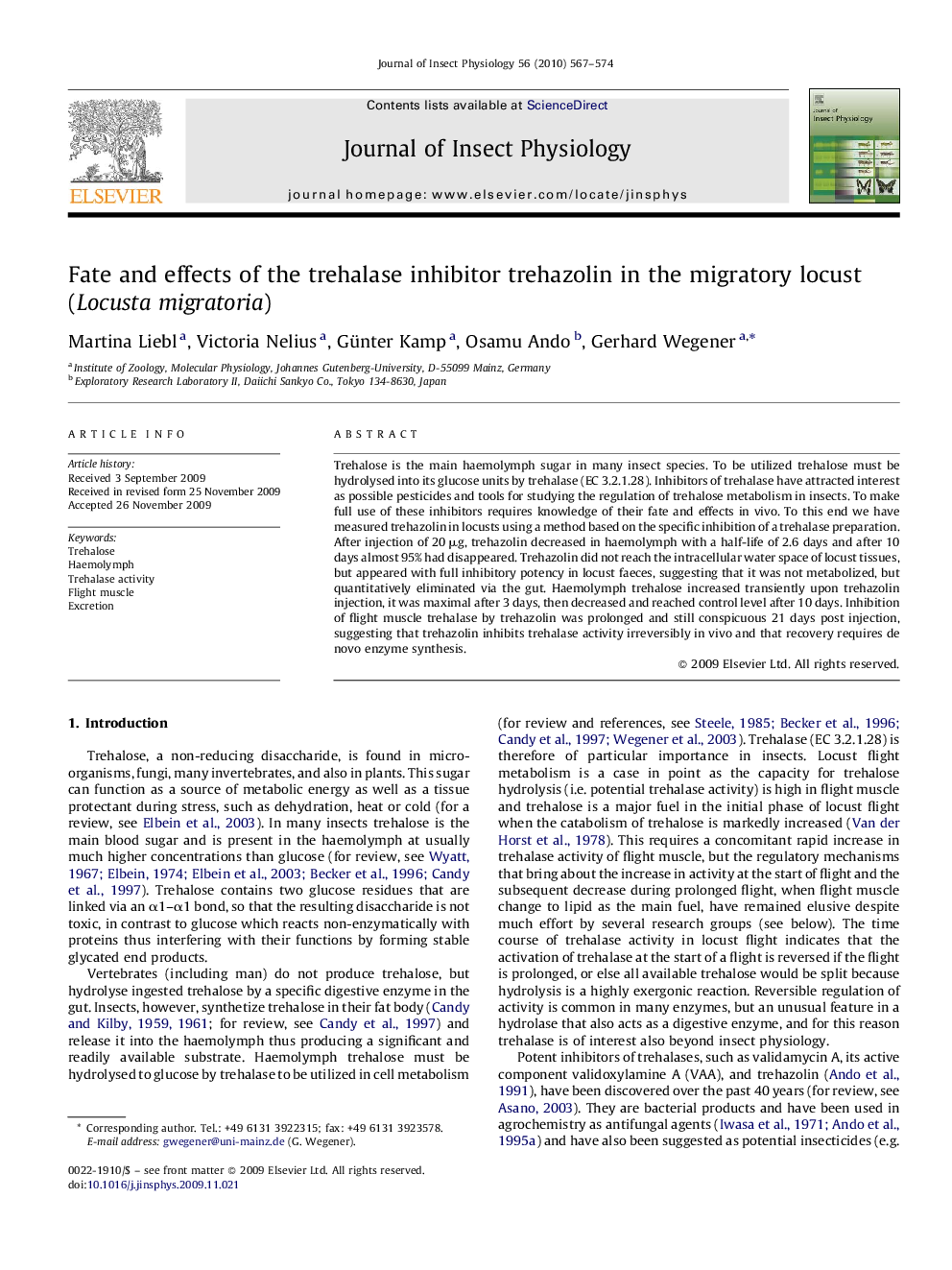| Article ID | Journal | Published Year | Pages | File Type |
|---|---|---|---|---|
| 2840779 | Journal of Insect Physiology | 2010 | 8 Pages |
Trehalose is the main haemolymph sugar in many insect species. To be utilized trehalose must be hydrolysed into its glucose units by trehalase (EC 3.2.1.28). Inhibitors of trehalase have attracted interest as possible pesticides and tools for studying the regulation of trehalose metabolism in insects. To make full use of these inhibitors requires knowledge of their fate and effects in vivo. To this end we have measured trehazolin in locusts using a method based on the specific inhibition of a trehalase preparation. After injection of 20 μg, trehazolin decreased in haemolymph with a half-life of 2.6 days and after 10 days almost 95% had disappeared. Trehazolin did not reach the intracellular water space of locust tissues, but appeared with full inhibitory potency in locust faeces, suggesting that it was not metabolized, but quantitatively eliminated via the gut. Haemolymph trehalose increased transiently upon trehazolin injection, it was maximal after 3 days, then decreased and reached control level after 10 days. Inhibition of flight muscle trehalase by trehazolin was prolonged and still conspicuous 21 days post injection, suggesting that trehazolin inhibits trehalase activity irreversibly in vivo and that recovery requires de novo enzyme synthesis.
